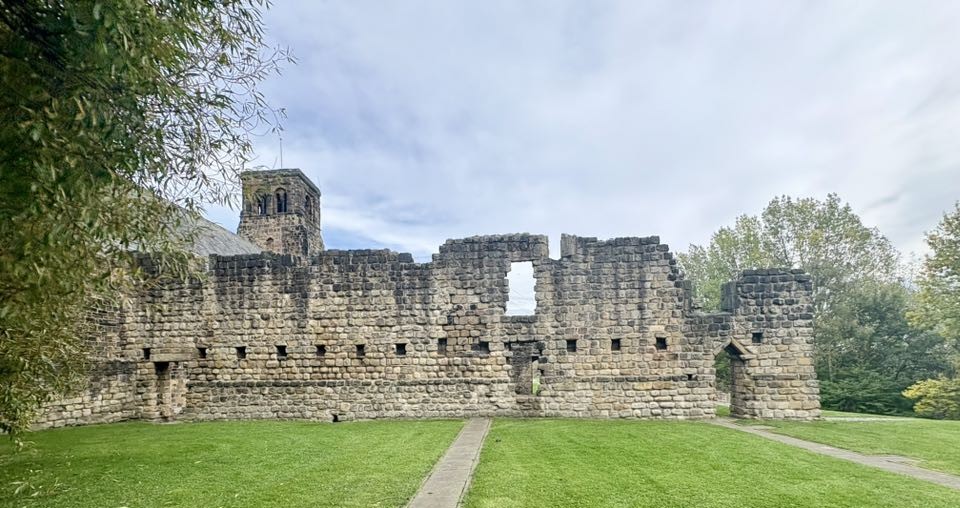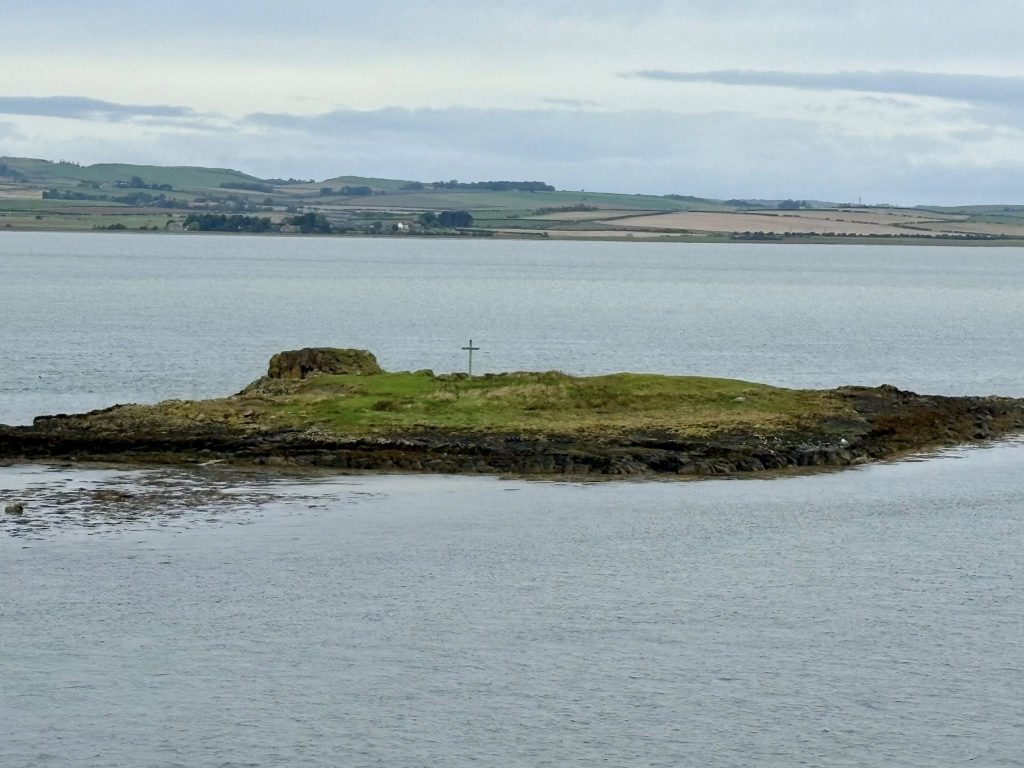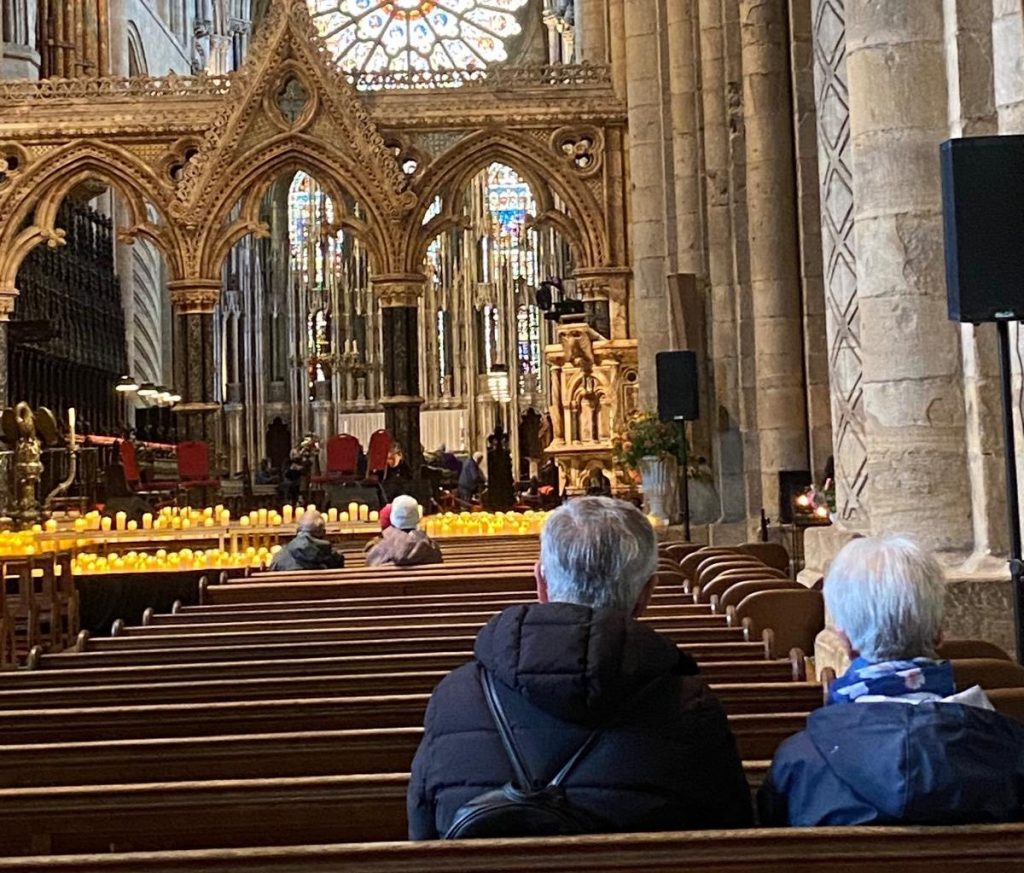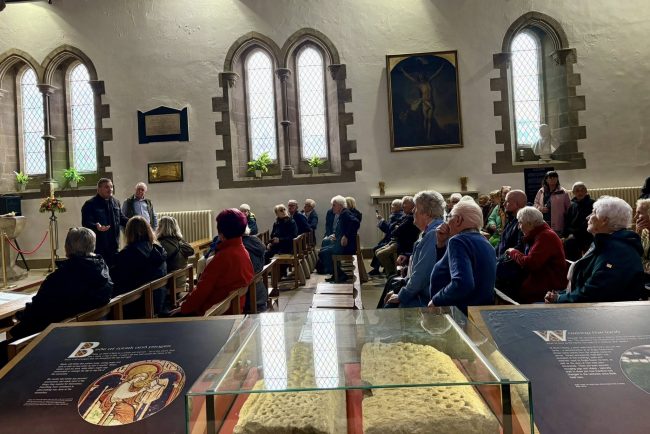By Michael Zwierzanski
I recently joined the parish on a pilgrimage to the Northern Saints – St. Bede, St. Aidan, St. Cuthbert – three ancient men who shaped the early Church in Britain. We travelled to where they once walked, and history came out of every stone. Ancient and modern stood together and gave a real sense of continuity between worlds.
But history was only part of what I found. I learned something about myself, the world, and the language we speak – not words themselves, but the way we use them, our attitudes and our way of life.
Day 1 – Jarrow, St. Bede’s & St. Paul’s
Our first stop was St. Bede’s in Jarrow, where we received a warm welcome from Fr. Andrew Shaw. Fr. Stephen celebrated Mass, and it was a joy to receive holy communion in such an ornate church. Behind the altar the carved figures of the 12 Apostles seemed alive, the stained glass of St. Bede glowed with a quiet reverence. Built for Irish immigrants, the church’s beauty spoke to care, patience, and true commitment.

A short drive away stood St. Paul’s – once a working monastery. Founded in 681, it was home to the Venerable St. Bede, whose Ecclesiastical History of the English People still shapes our world today. We saw the world’s oldest stained glass window and 900 year-old chair, still standing. There were statues, carvings and ancient stone. These were not just relics, but a reminder of a performance in a world that rushes past.
Day 2 – Lindisfarne
Lindisfarne, the Holy Island, felt different. Cut off by the tide, a place half in history, half with us now. We prayed at the priory, gazed upon St. Cuthbert’s island, and explored the ruins and wind-swept fields. We could imagine the hardship of 7th century life – the cold, the isolation, the raids – and the faith it must have taken to remain.

At Mass in the modern St Aidan’s Church, Fr Stephen spoke two lines that struck:
“Our world is limited by the language we speak”
(paraphrasing Ludwig Wittgenstein)
“St Aidan’s life was lived in stark contrast to the apathy of today”
(quoting St. Bede 30 years after the life of St. Aidan)
These words spoke to me, but at the time I wasn’t sure why.
Day 3 – Durham Cathedral

We were blessed with several hours at Durham Cathedral – a vast, holy place which holds the tombs of St. Bede and St. Cuthbert, a 1216 Magna Carta, and the work of many generations who committed to building something that lasts. Whilst admiring the beauty of the nave, Fr. Stephen’s words started to make sense.
Reflection – What language do we speak?
Commitment. It’s the language we’ve forgotten. Marriages, vocations, works of beauty, structures – people used to dedicate their lives to that which would outlive them. They lived the language of commitment. But today, we often turn inward, focus on self-actualization and making our desires the highest good.
The ancient Saints lived a different language – that of service and perseverance. Their lives were not comfortable, but they were full. As to were the lives of the builders of great beauty. Their grammar was that of devotion; their sentences written in endurance.
If our words are all about me, then apathy soon follows: It’s not my problem. I’m not responsible. What’s in it for me? And our contrast with St. Aidan grows starker.
My pilgrimage taught me to listen to the ancients – to hear their language through what they have left us: their writings, buildings, and lives. Through these, they speak to us the lived language of commitment. Turning against apathy and living as they did – with commitment – is a way to honour them.
And if we do, maybe the life of St. Aidan won’t be such a stark contrast to our own.

